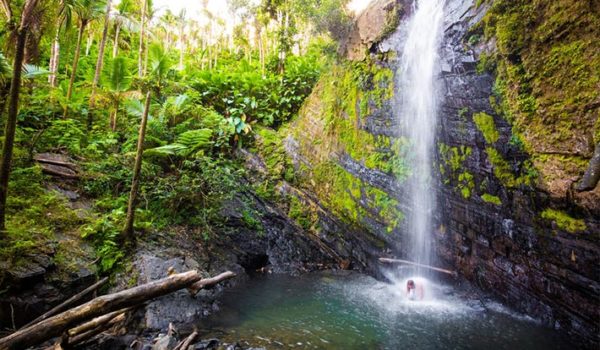There’s no other place like it in Puerto Rico. In fact, there’s no other place like it in the entire United States. El Yunque is the only subtropical rainforest in the United States Forest System.
Under its trees, you’ll find a unique ecosystem that has enchanted its visitors for centuries. There’s plenty of reasons why it is one of the world’s Top 28 New 7 Wonders of Nature. Its 28,000 acres are crisscrossed with hiking trails that will take on a mind-blowing journey.
Key facts about El Yunque
- Hiking at El Yunque – La Mina is the most frequented trail. Located off Route 191, it is a relatively easy hike that leads to one of the forest’s most beloved sanctuaries: La Mina waterfall. You will probably want to dive in. Bring a change of clothes.
- Other Trails – Among other popular paths, there’s Juan Diego Falls, which lies farther along Route 191. Mt. Britton Tower leads to a stone tower built in the 1930s and offers stunning panoramic views. And if you’re up for it, there’s El Toro Peak that will take you to the highest point of the forest at 3,532 feet.
- Biodiversity – 225 tree species, innumerable fern, epiphyte, and vine species, at least 16 amphibian species, 20 known reptile species, 11 native mammal species, 5 introduced (exotic) mammal species, and a combination of approximately 80 endemic, native, winter and summer migrant avian species.
- Water – Eight major rivers that originate in El Yunque supply water to 20% of the island’s population. To ensure sustainability, these watersheds are managed to also guarantee water for the forest’s ecosystems.
- A Pristine Forest – El Yunque’s core is still in primary condition. To this day, it exists without significant human modification. It is the largest remnant of the original forest that covered virtually all of Puerto Rico at the time of the Spanish arrival more than 500 years ago.
- Scientific Importance – El Yunque National is an insular tropical forest with one of the longest histories of forest research, dating back to the 1930s.

